The quiet breeze meandering over Alderspring carries with it the thick fragrance of fall. The dense clouds that formed an opaque sky and sporadically spit rain this morning now stretch into broken ropes of mist that wrapped in and out of the vertical walls of the canyons at the base of the peaks. Glimpses of white snowfields with blue sky beyond could be seen through the occasional sky windows above the 10,000 foot line.
My eye drifts down through the cords of cloud to the Pahsimeroi River bottom, just a few hundred yards from our back door. Large herds of elk populate the wild river bottoms; they can be occasionally seen passing like a mirage through the dense willows they find cover in. Their ethereal bugling echoed over the still air on this misty morning. The continual conversation of their high pitched bugles mingles with the song of wild geese overhead flying in low V formation practicing for the journey southward and the sound of the river working through the meandering banks.
The curves and oxbows were carved by gravity in the flat of a valley surrounded by a wall of imposing and foreboding 2-mile high whitened crags: the Pahsimeroi, Lemhi, and Lost River Ranges. These are the highest peaks in Idaho. Despite their dramatic stereotypical Rocky mountain appearance, many of the peaks remain unnamed, and similarly, likely unclimbed. There’s just no one here to climb them- no cities nearby, and no national parks to attract. They are de-facto wild mountains unknown to the masses.
The river is full of life at this time of year. The cow elk, herded and defended in rut by majestically racked herd bulls, calmly graze along the Pahsimeroi riverbanks. The water they drink is windowpane clear, and the river runs full in the cool climate of autumn because the low sun no longer evaporates moisture from the surrounding landscape, as it does in the heat of the summer.
The kaleidoscopic gravels in the bottom are iridescent as huge female Chinook, or king salmon, in excess of 3 feet long excavate spawning bed redds in the sorted gravels. They dig with their broad and often tattered tail; it shows signs of the inevitable decay and white exfoliating flesh that eventually means a leprosy-like death. They have travelled uphill over a vertical mile and 900 miles horizontally up the mighty Columbia River to return to their birthplace in the Pahsimeroi River. They have survived the Orca’s mouth and fisherman’s seine, but here they will die. Shortly after they spawn and cover their thousands of eggs in the deep gravels, their purpose, their destiny, has been met. They will quietly fade away like the Inuit of old left behind on the tundra, their flesh becoming the nutrients in the water that sustain their young when they hatch out next spring.
We The coyotes are having a heyday with the onset of fall. The pups come close to our home every night, feasting on voles in the thick meadow grass that our beeves will graze through the long fall and early winter. The pups yip and howl high pitched little dog yelps and choruses, trying hard to be like mom but ridiculous in their lack of depth of voice.
The aspen and cottonwood, our leafy trees, tremble for a few more days before they reluctantly let go and become part of soil biology themselves. The leaves are all yet intact, but show signs of color coming on strong. A careful look at their venation shows the sign, as with the she-salmon, that their time has come. Color bleeds slowly across the pattern of vein on leaf. Soon, within a week, the bottoms will be ignited with the fire of fall. Golds and yellows will be set off with the contrast of the wet sage beyond and the vibrant red osier dogwoods along the river.
The beeves have their heads down in continual luxury. Instinct tells them to eat with abandon to prepare for the challenge of winter. Grass sweet with sugars set by frosty nights convert to fat in the elegant system of bovine rumination. Hair coats thicken. They buck in the icy morning air when the sun hits them. It is a joyful time of year for them. They returned to the ranch after walking many miles in the high mountains over the summer, and I believe that they are grateful.
And we, the husbandmen and women of them, were ready. We worked hard to keep fields moist and growing after our hay is harvested in midsummer. Everything we do to tend the rich and green meadows after the hay is baled and stacked is done in anticipation of the beeves return from the high ranges.
And this year has been exceptional. The diversity of grasses, legumes and other forbs were perfectly at peak when the beeves returned. Our heritage ancient alfalfa (planted long before the idea of GMO was even hatched) and sanfoin were just coming into full bloom when the beeves started grazing it. It’s the sweetest stage, I think. I often eat the flowers, and see why the honeybees attack them with a voracious intensity. The sweet nectar they seek rolls over my tongue. The beeves relish the blooms as well, picking them first.
I glance a squinting gaze toward the late afternoon sun today as it bounced along the peaked horizon behind the beeves. I had forgotten until now, but my memory was jarred with a secret signature of fall that gets betrayed at this hour, at this time of year. There, on the grass that the beeves were eating, was a nearly unbroken and fine lacework of spider webs made silver by the setting sun. Tiny hatchling spiders, by the thousands, in a plethora of species diversity, have ejected their parachute like threads from spinnerets, to be carried on the winds of fall to wherever the breeze would take them. The air was full of them, but many of them have landed here. They will carry on and contribute to the food chain legacy next year on Alderspring. The baton has passed. Another generation.
As I look out the window above my desk, I see the moon is all the way up, and it’s a little daylight-like outside. I’m reminded to wrap up my tome, because of the unending work at hand. It’ll be a nice day tomorrow, which is good, because it’s a firewood day. We load up truck and trailers, hotdogs and tortillas, saws and wood hooks for a day high up in Stanley basin where a giant fire burned 60,000 acres of forest 2 years ago. In an all hands on deck workday, girls and guys from ages 12 to 55 will gather 10 cords or so; hopefully it will be enough to keep our ranch home fires burning. It’s also, in some ways, my opportunity to pass the baton as well, as I teach my daughters and the young people that work for us the ecology of fire and forests, the gratefulness for the wood that will keep us warm, and the satisfaction of a day of hard physical labor.
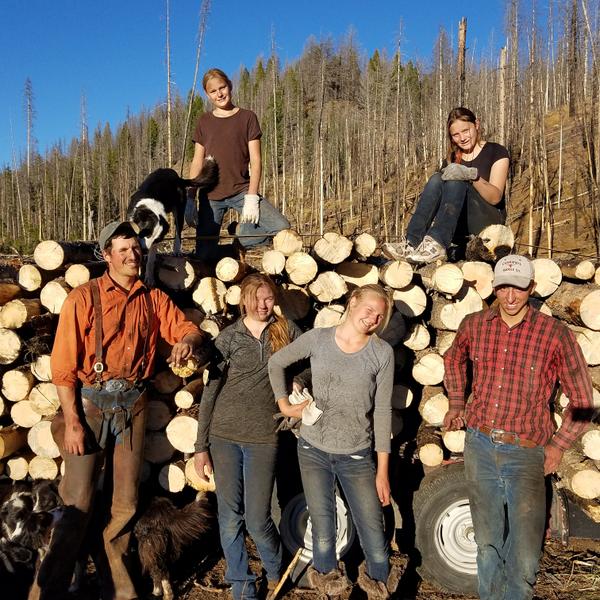
The weather people say the winter may be just as cold and wet as last year’s, based on La Nina projections. We need to be ready. Wood is our only heat source, but it is somehow appropriate, I feel, to be as dependent on these mountains and landscape as the rest of our livelihood is. I believe this to be true: even those tiny spiders and coyotes benefit our livelihood. I might not understand how, but we live on a pristine landscape that currently functions very similarly to the way it did before we showed up on the scene. So we tread lightly, trying to fit in; to do no harm, and listen, and learn. It never ends, this learning thing. Each year, we gain a little more wisdom from the land.
Thanks for being a part of our livelihood, and learning with us. Our effort to bring you the best beef means that you have a direct connection to the land, the water, and the wild things we share this landscape with. We appreciate you, and that connection. Happy trails to you all.
Glenn, Caryl, Girls and Cowboys on Alderspring.

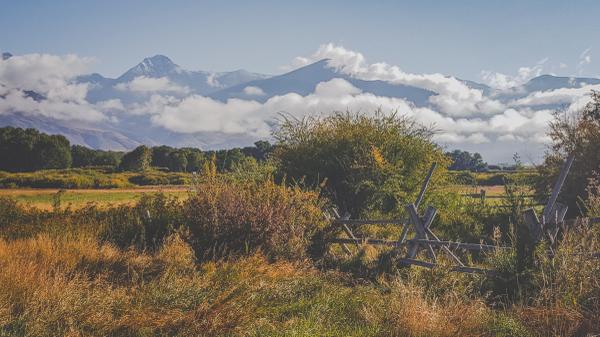


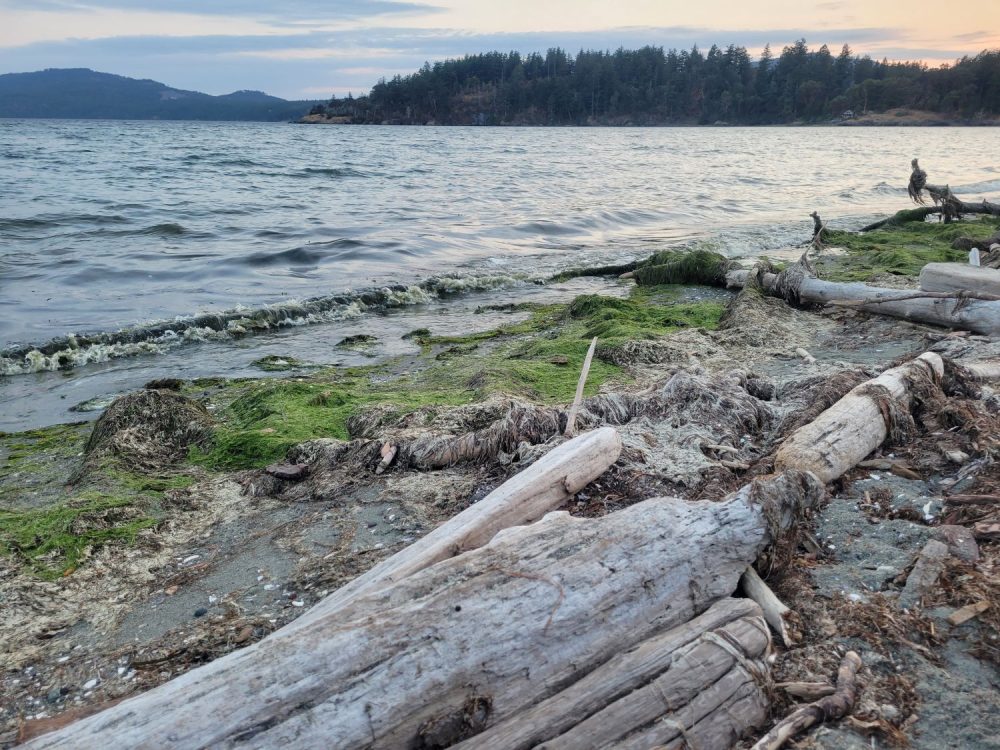


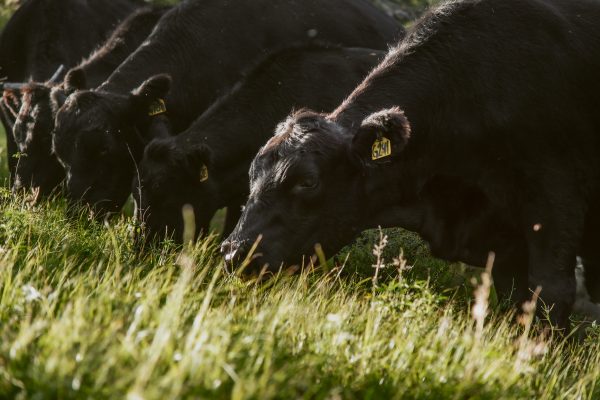
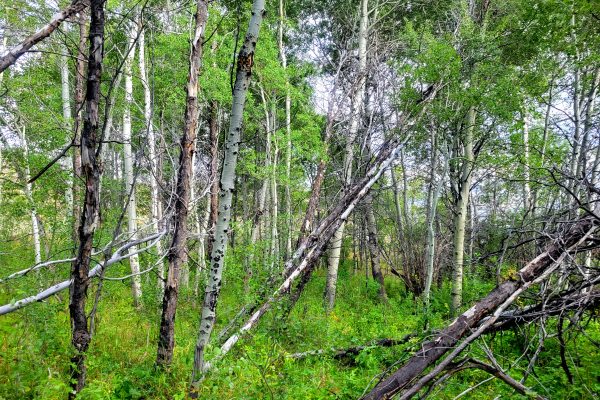
Jeff Z
Your poetic descriptions amaze me Glenn.
“windowpane clear,”
“kaleidoscopic gravels,”
“Orca’s mouth and fisherman’s seine”
“Grass sweet with sugars set by frosty nights convert to fat in the elegant system of bovine rumination.”
What a fragrant way of saying “the cows put on weight for winter by eating the grass.”